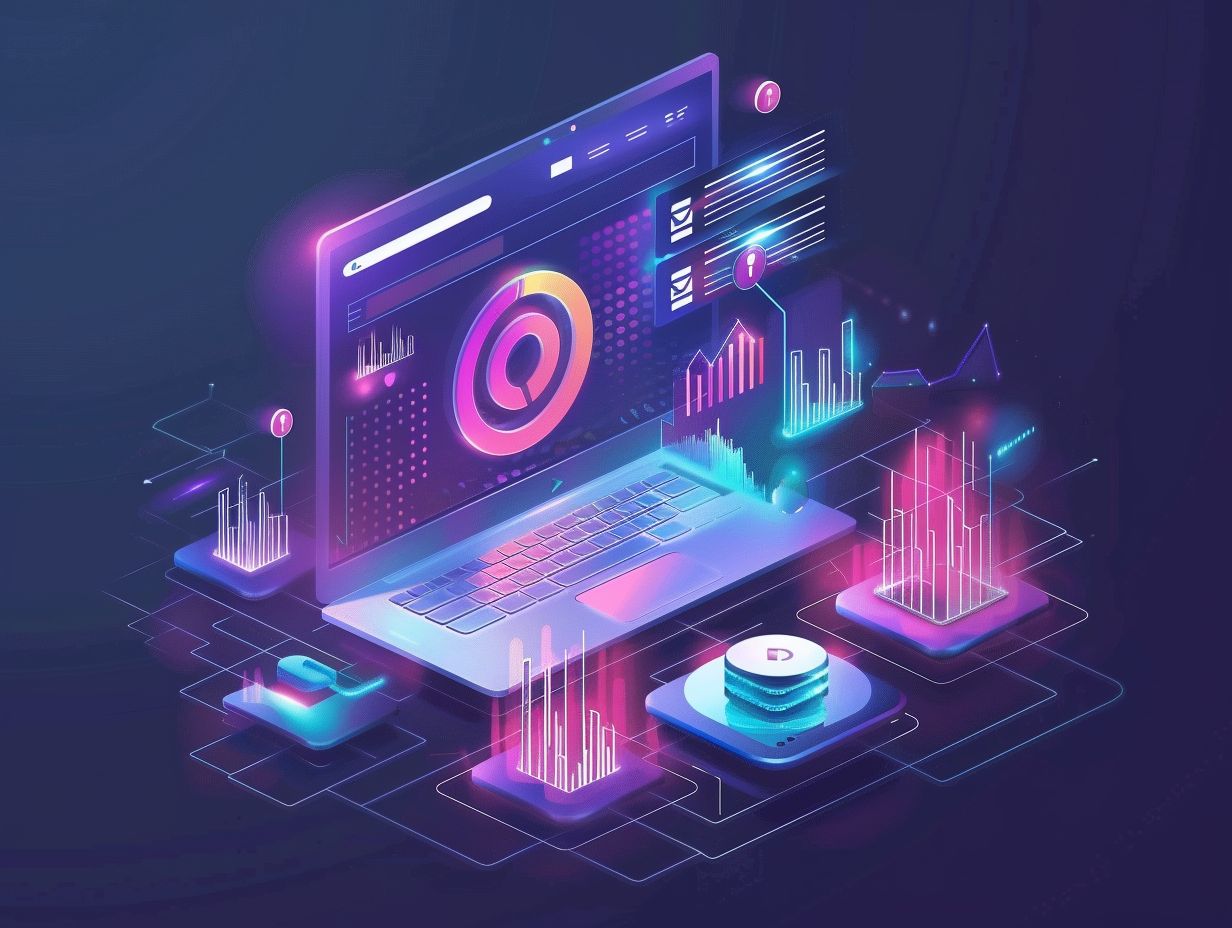In the ever-evolving landscape of Search Engine Optimization (SEO), understanding the importance and definition of canonical URLs is crucial for all websites aiming to maximize visibility and avoid issues related to duplicate content.
A canonical URL refers to the preferred version of a webpage, indicating to search engines and users which version should be ranked and indexed.
This article explores the definition and significance of canonical URLs, explains how they function, and provides practical tips for their effective use.
Discover how canonical URLs can assist in automatically generating SEO-optimized articles. Continue reading to ensure that your online presence is not only successful but also strategically positioned for future success!
Contents
- 1 Key Takeaways:
- 2 What is a Canonical URL?
- 3 How Does a Canonical URL Work?
- 4 How to Implement Canonical URLs on Your Website?
- 5 Common Mistakes to Avoid with Canonical URLs
- 6 How Autoblogging.ai Generates SEO Optimized Articles?
- 7 Frequently Asked Questions
- 7.1 What is a Canonical URL in SEO?
- 7.2 Why is a Canonical URL important for SEO?
- 7.3 How does a Canonical URL affect website traffic?
- 7.4 Can a Canonical URL be used for different domains?
- 7.5 How does Autoblogging.ai (1-click AI Writer) generate SEO optimized articles?
- 7.6 Are there any best practices for using Canonical URLs?
Key Takeaways:
What is a Canonical URL?
A canonical URL is an essential Search Engine Optimization (SEO) tool that helps website owners manage duplicate content and consolidate link equity by indicating a preferred version of a web page. This is particularly important for websites with dynamic URLs and multiple pages featuring the same or similar content, as it can confuse search engines and dilute link equity.
By including a canonical tag in the HTML header, site owners can specify which page version they want indexed by search engines like Google. This practice enhances the site’s visibility in search results and improves the overall user experience.
Canonicalization practices are crucial for both e-commerce and content-rich websites to effectively communicate with search engines and optimize their crawl budget.
Definition of Canonical URL
A Canonical URL refers to the preferred version of a web page that contains the same or similar content, as indicated by the canonical tag in the HTML header. This functionality is essential for managing duplicate content across websites, which can occur due to multiple versions of the same page being accessible through different URLs, URL parameters, or printer-friendly versions of articles and syndicated content.
The canonical tag informs search engines which URL version of a page should be regarded as the primary version, helping them identify the original source of the content and reducing the risk of penalties associated with duplicate content. For instance, if a website has a product page accessible under multiple URLs, the canonical tag instructs search engines to index only the main page.
This ensures that all link equity (ranking power) is attributed solely to the primary URL, which is crucial for implementing successful SEO strategies for businesses.
Importance of Canonical URLs in SEO
Canonical URLs play a vital role in SEO by resolving duplicate content issues and guiding search engines to properly index and rank the preferred version of a webpage, thereby enhancing overall search relevance.
These URLs serve as unique identifiers for search engines, directing them to the original content and eliminating the confusion that arises when multiple URLs display the same information. When webmasters implement canonical tags, they prevent their sites from facing penalties for content duplication, which outweighs any potential loss of link equity.
This not only improves a page’s ranking but also enhances the user experience by directing visitors to the most authoritative source. Proper indexing by search engines clarifies the intent of the page, increasing the likelihood that it will appear in relevant searches and attract more qualified traffic.
How Does a Canonical URL Work?
Canonical URLs assist search engines in identifying the definitive version of a web page, thereby simplifying the processes of indexing and crawling while preventing issues related to duplicate content.
When search engines come across multiple pages with identical or very similar content, they may struggle to determine which page to rank, potentially diluting link signals and diminishing overall page authority.
Webmasters can indicate their preferred canonical version by using a canonical tag, which helps ensure that search engines focus their indexing efforts on that specific URL. This practice can enhance search visibility and concentrate link equity effectively.
How Search Engines Interpret Canonical URLs
Search engines recognize Canonical URLs by prioritizing the canonical tag specified in the HTML code. This tag informs search engines of the preferred version of a page, optimizing the indexing process and managing the site’s crawl budget more efficiently.
This is particularly important in an online environment where web pages often feature multiple versions of the same content, which can confuse indexing and dilute page authority. Proper implementation of canonical tags—such as linking a product page that exists under different category URLs back to a single selected URL—ensures that search engines allocate more time and resources to the most relevant content.
For instance, if an e-commerce site sells a product available in various colors, directing all product variations to a single canonical product page aids the indexing process and enhances the product’s visibility in search engine results. This approach allows search engine algorithms to assign all link authority to the canonical page.
Establishing clear and definitive structures through canonicalization can significantly improve a site’s SEO performance across all metrics.
How Canonical URLs Affect Duplicate Content
Canonical URLs help reduce duplicate content issues by specifying the preferred version of a page, which consolidates ranking signals and enhances the site’s SEO efficiency. When a website has multiple URLs with similar or duplicate content, canonical tags inform search engines about which version should be considered the main page.
Implementing these tags minimizes the negative effects associated with duplicate content, which can lead to a drop in rankings and confuse search engine algorithms. As a result, the correct page is more likely to rank higher in search results, thereby gaining better visibility.
Additionally, using canonicalization not only helps maintain better organization of the site but also improves the user experience by directing users to the most relevant content, ultimately strengthening the site’s authority and relevance in the eyes of search engines.
How to Implement Canonical URLs on Your Website?
Implementing canonical URLs on your website involves several best practices, including the use of the rel=”canonical” tag, creating appropriate redirects, and utilizing tools like Google Search Console to effectively manage and monitor your SEO efforts.
1. Use the rel=”canonical” Tag
The rel=”canonical” tag is a crucial technical element of Canonical URLs, serving as a piece of HTML code placed in the header of a web page to inform search engines about the preferred version of that page and enhance its SEO performance.
By designating a canonical URL, website owners can effectively address the issue of duplicate content, which can confuse search engines and potentially harm a page’s rankings. For instance, if a product is accessible through multiple URLs due to session IDs or tracking parameters, the rel=”canonical” tag allows the site owner to indicate the primary URL that should be indexed by the search engine.
This is done by adding a line such as <link rel=”canonical” href=”https://www.example.com/page-url” /> to the <head> section of the HTML. Implementing this small line of code can significantly improve a page’s search visibility and authority, ultimately leading to increased organic search traffic.
2. Set Up Redirects
301 redirects are one of the most important tools for canonicalization, as they permanently direct users and search engines from duplicate or outdated URLs to the canonical version of a page. This process helps consolidate link equity and ensures that visitors are seamlessly directed to the most relevant content, enhancing the overall user experience.
Businesses can utilize 301 redirects to manage instances of duplicate content that may arise from various sources, such as minor URL variations or accidental duplications across different platforms. By helping search engines identify which page should be indexed, these redirects help avoid potential penalties for duplicate content.
An effective redirect strategy streamlines navigation and preserves the website’s SEO health.
3. Use the Google Search Console
Google Search Console is essential for assessing the effectiveness of your canonical URLs. It helps webmasters monitor indexing issues, evaluate crawl performance, and ensure that search engines correctly recognize the canonical versions of their site’s pages.
With tools like the URL Inspection Tool, users can see how Google interprets their canonical implementations and identify any inconsistencies in indexing status or potential duplicate content issues that need to be addressed.
This platform provides crucial data regarding the indexing status of URLs, enabling users to determine which URLs are correctly indexed and which are not due to incorrect canonical tag configurations.
By utilizing this information, webmasters can gain insight into their site’s overall condition and make more informed decisions to enhance site performance and improve search rankings.
Common Mistakes to Avoid with Canonical URLs
The key aspects of implementing Canonical URLs involve selecting the correct URL and ensuring that canonical tags are used appropriately.
Inadequate implementation of Canonical URLs—such as neglecting to use them, selecting the wrong version of a page as the canonical, or applying them to non-duplicate content—can lead to SEO issues and a decrease in rankings.
1. Not Using Canonical URLs at All
Failing to utilize Canonical URLs can lead to significant SEO challenges, as search engines may struggle to identify the authoritative version of a page. This confusion can result in missed ranking opportunities and a diminished user experience.
When multiple versions of the same content exist—such as a product page accessible via different URLs—the SEO impact can become diluted. For instance, if both example.com/product and example.com/product/?ref=socialmedia are indexed, search engines may be uncertain about which version to prioritize.
This uncertainty can cause their algorithms to misinterpret the page’s authority, potentially resulting in lower search rankings and an increase in instances where users encounter redundant content. Ultimately, neglecting to implement Canonical URLs undermines the effectiveness of an SEO strategy, causing valuable traffic to be redirected to less authoritative pages.
2. Using the Wrong URL as the Canonical Version
Selecting the wrong URL as the canonical version can significantly reduce search engine visibility, lower ranking positions, and negatively impact the SEO performance of web pages.
When search engines encounter multiple URLs with similar or duplicate content, they may index the incorrect one due to the lack of clear direction on which version to prioritize. This situation can diminish the page’s authority and dilute link equity among various iterations of the same content, potentially resulting in a loss of ranking positions.
To prevent this, it is essential to carefully analyze all instances of content duplication and choose the most appropriate version as canonical. Factors such as inbound links, user engagement data, and the quality of the content itself should be taken into account to ensure the correct selection.
3. Using Canonical URLs for Non-Duplicate Content
Using canonical URLs on non-duplicate content can create confusion in SEO, as it contradicts the purpose of canonicalization and may result in unique pages being indexed less frequently.
When search engines encounter multiple URLs that appear to be the same but are, in fact, unique, the improper application of canonical tags can lead the search engine to overlook the unique content. This oversight reduces the visibility of that content, ultimately resulting in decreased organic traffic.
If canonical URLs are not applied correctly, the SEO strategies employed by businesses can become ineffective, limiting their reach.
Proper use of canonicalization ensures that only pages with actual duplicate content are affected, while unique pages can be indexed and ranked independently. This clarity aids search engines and enhances overall SEO efforts.
How Autoblogging.ai Generates SEO Optimized Articles?
Autoblogging.ai is a software application that utilizes advanced algorithms to automatically and efficiently generate SEO-optimized articles. It incorporates essential elements such as keyword research, appropriate use of canonical URLs, and high-quality content generation to enhance a website’s search visibility and relevance.
1. Keyword Research and Optimization
Keyword research and optimization are crucial for creating SEO-optimized articles using Autoblogging.ai, as they align the content with search intent and enhance the chances of ranking well.
By leveraging advanced algorithms and data analytics, the platform identifies trending keywords that resonate with audiences, enabling users to create content that meets the needs of their target market.
This process not only helps identify the most relevant topics to write about but also assists in crafting articles that are more likely to attract views and engagement.
Autoblogging.ai employs various optimization techniques, such as improving meta tags and employing internal linking strategies, to boost the visibility of generated articles on search engine results pages.
This results in increased organic traffic and a stronger digital presence.
2. Proper Use of Canonical URLs
The proper use of Canonical URLs is crucial for the effective functioning of Autoblogging.ai, as it ensures that generated articles are correctly indexed and ranked by search engines, thereby enhancing their SEO value.
Autoblogging.ai assigns unique canonical tags to each article, helping search engines identify the most important pages when similar content is available from multiple sources. This practice reduces the risk of duplicate content penalties and allows the distinctive features of the articles to be recognized.
By integrating well-constructed canonical URLs, the visibility of individual articles is enhanced, contributing to a stronger overall online presence. For those aiming to expand their online reach, understanding and utilizing these constructs can lead to significant improvements in traffic and engagement metrics.
3. Structured Data Implementation
One of the key features of Autoblogging.ai is its implementation of structured data, which significantly enhances the SEO attributes of generated content. This functionality makes it easier for search engines to understand and index articles effectively.
Autoblogging.ai utilizes structured data markup, a system that organizes data to provide clearer context for the content and information within an article. As a result, this leads to improved visibility in search engine results pages (SERPs) and increases the likelihood of rich snippets being displayed, which drives additional traffic to the site.
In a competitive digital marketplace, the ability to produce content that is inherently search engine-friendly allows users to find the information they need, ultimately leading to increased engagement and audience reach.
4. Quality Content Generation
Autoblogging.ai strongly emphasizes quality content generation by ensuring that each article produced is highly relevant and engaging, which is essential for achieving positive SEO results. By prioritizing well-researched topics and writing styles that capture reader interest, Autoblogging.ai not only enhances the user experience but also improves search engine rankings for websites.
Sites that feature high-quality articles are more likely to experience an increase in organic traffic, as search engines increasingly reward those that provide real value to their users. Additionally, the ability to engage the intended audience leads to increased time on site and a decreased bounce rate, both of which have a positive impact on SEO performance.
Ultimately, the integration of effective content strategies by Autoblogging.ai give the power tos site owners to succeed in a competitive online environment.
Frequently Asked Questions
What is a Canonical URL in SEO?
A Canonical URL in SEO is a specific type of URL that is used to signal to search engines which version of a webpage should be considered the authoritative source. It helps to eliminate duplicate content issues and consolidate page ranking signals to improve overall SEO performance.
Why is a Canonical URL important for SEO?
Canonical URLs play a crucial role in SEO by ensuring that search engines understand the proper URL for a webpage, especially when there are multiple versions of the same content. This helps to avoid confusion and ensures that the correct page is indexed and ranked.
How does a Canonical URL affect website traffic?
A Canonical URL can impact website traffic positively by consolidating the ranking signals of similar pages and avoiding the dilution of SEO efforts. It also helps to avoid any penalty from search engines for duplicate content, which can negatively impact website traffic.
Can a Canonical URL be used for different domains?
Yes, a Canonical URL can be used for different domains but only in specific cases. Search engines consider pages from different domains as different entities, so it is important to use a self-referencing Canonical URL or a cross-domain Canonical URL with proper implementation to avoid any confusion.
How does Autoblogging.ai (1-click AI Writer) generate SEO optimized articles?
Autoblogging.ai’s AI-powered article generator uses advanced algorithms and natural language processing to create high-quality, SEO optimized content. It analyzes search engine ranking factors, keyword density, and other SEO metrics to generate articles that are optimized for search engines, helping businesses improve their online visibility and attract more traffic.
Are there any best practices for using Canonical URLs?
Yes, there are a few best practices for using Canonical URLs in SEO. These include implementing the Canonical URL on the preferred version of the webpage, using self-referencing or cross-domain Canonical URLs correctly, and ensuring that all versions of the page have the Canonical tag. It is also important to avoid redirect chains and use proper 301 redirects when necessary.






